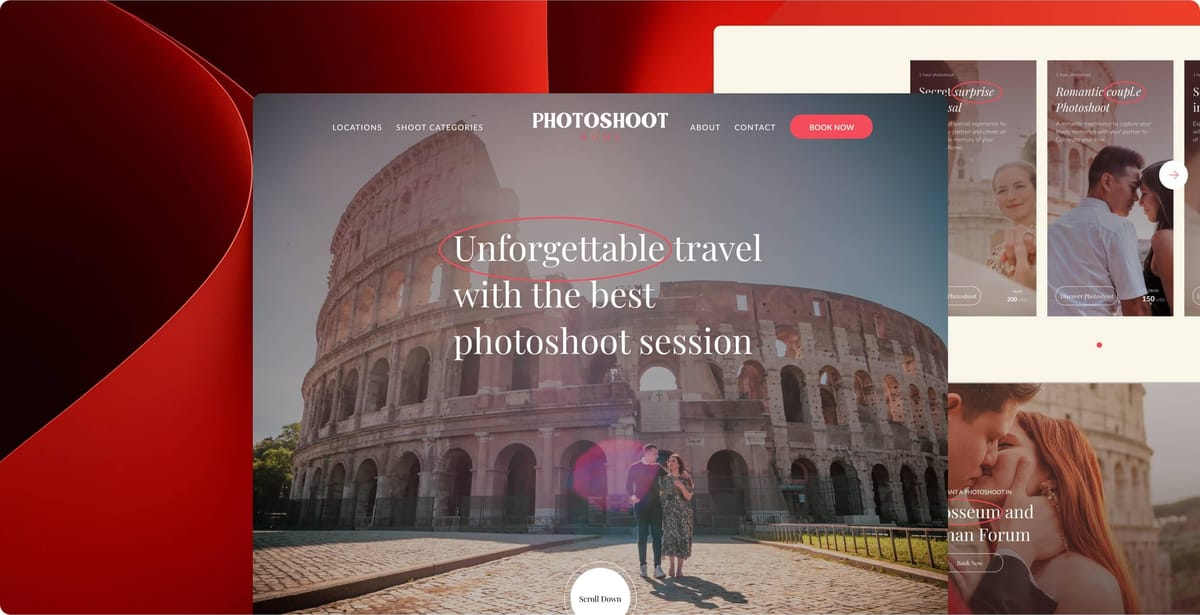
Photoshoot Rome
Photography Marketplace
Personalized photography marketplace connecting tourists with professional photographers in Rome
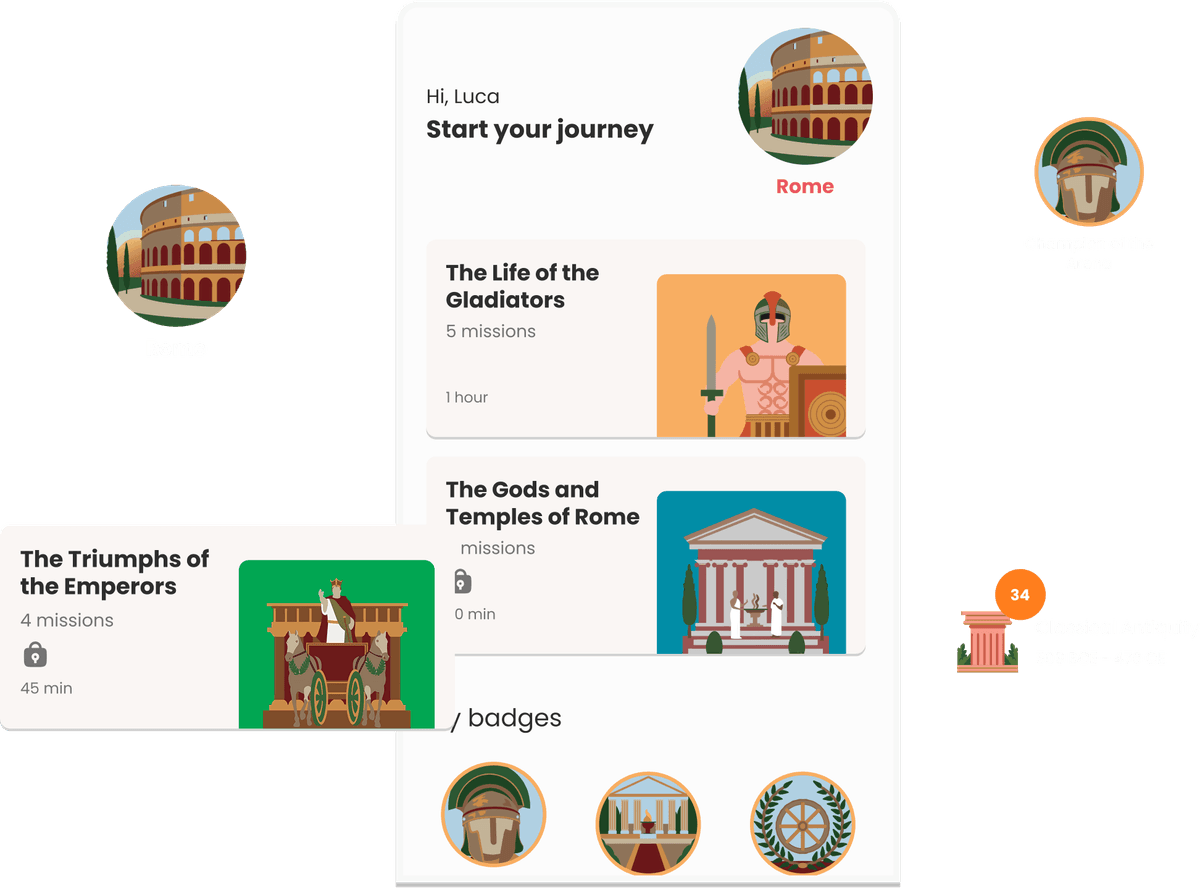
Transforming how people experience Italy's archaeological sites through location-based gaming and interactive storytelling, Sherd addresses the critical gap between tourist interest and actual learning at historical sites. As founder and lead designer, I conducted field research across three major archaeological sites and developed a complete mobile app that combines ancient history with game design, creating educational experiences that feel like adventures.

I conducted field research across three major Italian archaeological sites - Pompei, Ercolano, and Villa di Massenzio - surveying 145 visitors to uncover real pain points.
The research revealed a striking paradox: while 90% of visitors expressed strong interest in educational content, most struggled to understand key monuments. At Pompei, only 26% could identify the Basilica. At Ercolano, just 10% recognized the Casa dell'Alcova.
Visitors also faced navigation challenges, feeling lost despite spending 2-3 hours at each site. Existing solutions failed to provide the contextual, story-driven experience they craved, validating the opportunity to create an engaging platform that transforms passive sightseeing into active learning adventures.
I developed four distinct personas representing different archaeological site visitors, from digital-native students to international tourists and cultural enthusiasts. These personas revealed key insights about diverse user needs: some prioritize social and gamified experiences, others seek deeper cultural context, while many need better navigation and storytelling support.
This user diversity informed Sherd's flexible design approach, ensuring the app could adapt to different engagement preferences while maintaining archaeological accuracy and educational value.
Age: 19
Sex: Female
Job: Student
City: Naples
Economic situation:
Low profile
Hobbies: Attends a tennis class 3 times a week
Age: 26
Sex: Male
Job: Freelance
City: Rome
Economic situation:
Middle profile
Hobbies: Has recently started a photography course
Age: 20
Sex: Female
Job: Freelance
City: London
Economic situation:
Middle profile
Hobbies: She's a professional dancer for a year
Age: 32
Sex: Male
Job: Broker
City: Canberra
Economic situation:
High profile
Hobbies: Attends theater and opera. He is a fan of classical music
Sherd gamifies archaeological visits through location-based missions that guide visitors to key points while uncovering historical stories. Users receive GPS-triggered missions, complete interactive challenges, and earn rewards that unlock deeper knowledge.
This creates an engagement loop where learning becomes adventure, transforming navigation challenges into an experience that feels more like exploration than a traditional museum visit.
Open the app and get a notification for a new mission available in your area
Accept the mission and use the interactive map to navigate to the marked location.
Head towards the designated point, exploring the surroundings as you approach the destination
Complete interactive challenges and mini-games to unlock historical insights
Finish the mission and collect your badge as a reward for your achievement
The wireframing process mapped core user flows from arrival through gamified engagement, focusing on essential screens: mission selection, GPS navigation, interactive challenges, and rewards. The information architecture prioritizes simplicity, with location-based missions presented as discoverable content and clear mission structure: context setting, location guidance, exploration, and knowledge rewards.
Low-fidelity wireframes balanced gaming elements with educational content, ensuring archaeological information remained central while game mechanics enhanced the learning experience. The resulting structure creates seamless flow where users naturally progress through historical discoveries.
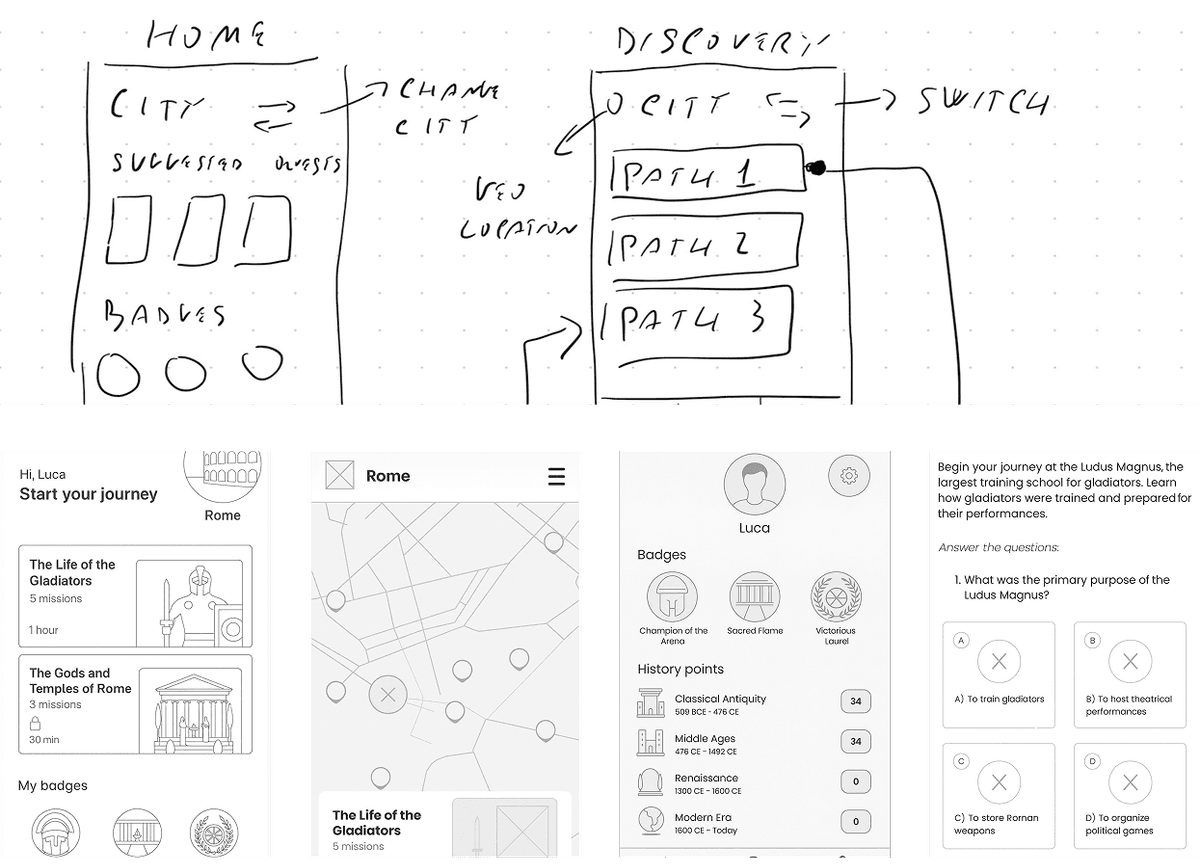
The Sherd brand identity stems from the archaeological term "sherd" - pottery fragments that help archaeologists piece together historical narratives, just as the app helps visitors discover and connect ancient stories. The logo features a stylized pottery shard with dynamic lines symbolizing archaeological discovery and digital innovation, while the coral-red primary color evokes terracotta craftsmanship with modern energy.

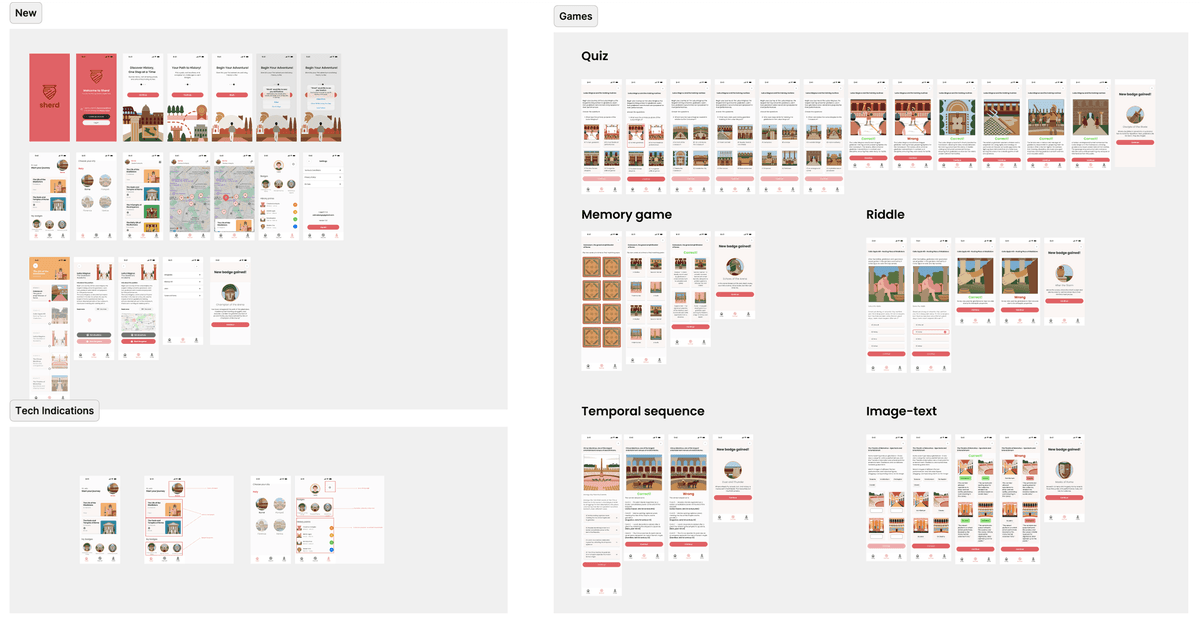
The interface prioritizes intuitive navigation through a clean card-based layout where missions are organized by proximity and difficulty. The map seamlessly integrates GPS navigation with historical context, ensuring users stay oriented while exploring archaeological sites.
Interactive elements follow familiar mobile patterns while incorporating subtle archaeological aesthetics. Mission cards feature rich imagery and progress indicators, while discovery screens use visual storytelling to present historical information. Quiz interfaces balance educational content with engaging game mechanics.
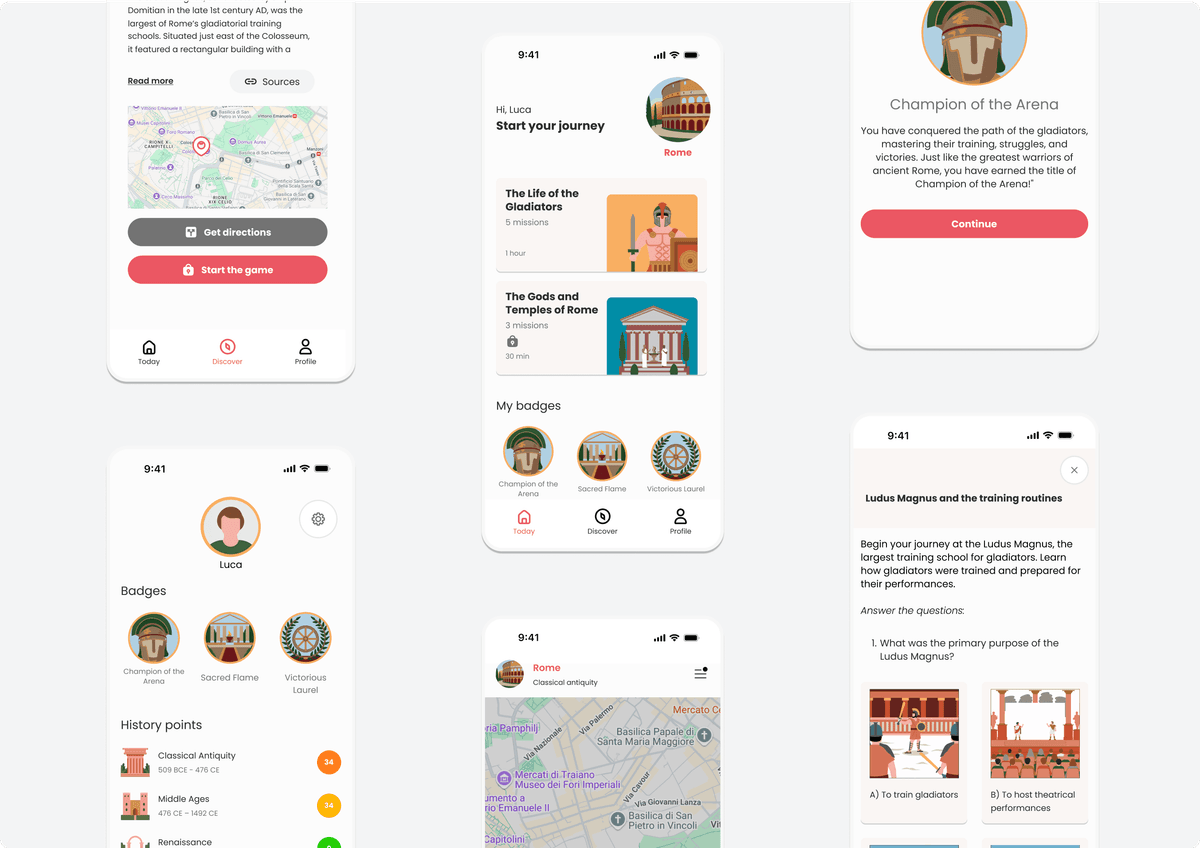

The prototype includes a fully functional Progressive Web App (PWA) available for download directly from the website. Users can experience Sherd's complete functionality using real GPS navigation and location-based features, making it a genuinely working archaeological guide rather than just a concept demonstration.
Through the "Brave the unknown" button, users can explore missions and mini-games without being physically present at archaeological sites. This testing approach gathered valuable feedback on interface clarity and engagement levels.
The PWA implementation ensures cross-platform compatibility and offline functionality, essential for sites with limited connectivity. Users confirmed the app successfully communicated historical context, validating the gamified learning approach.
In April 2019, Sandu Publishing featured Sherd in "100 Graphic Design Solutions: Interactive Design for Screen," recognizing its innovative approach to interactive design and cultural tourism. This publication validated the design methodology of combining archaeological accuracy with gaming mechanics, positioning Sherd among pioneering projects in digital cultural experiences.
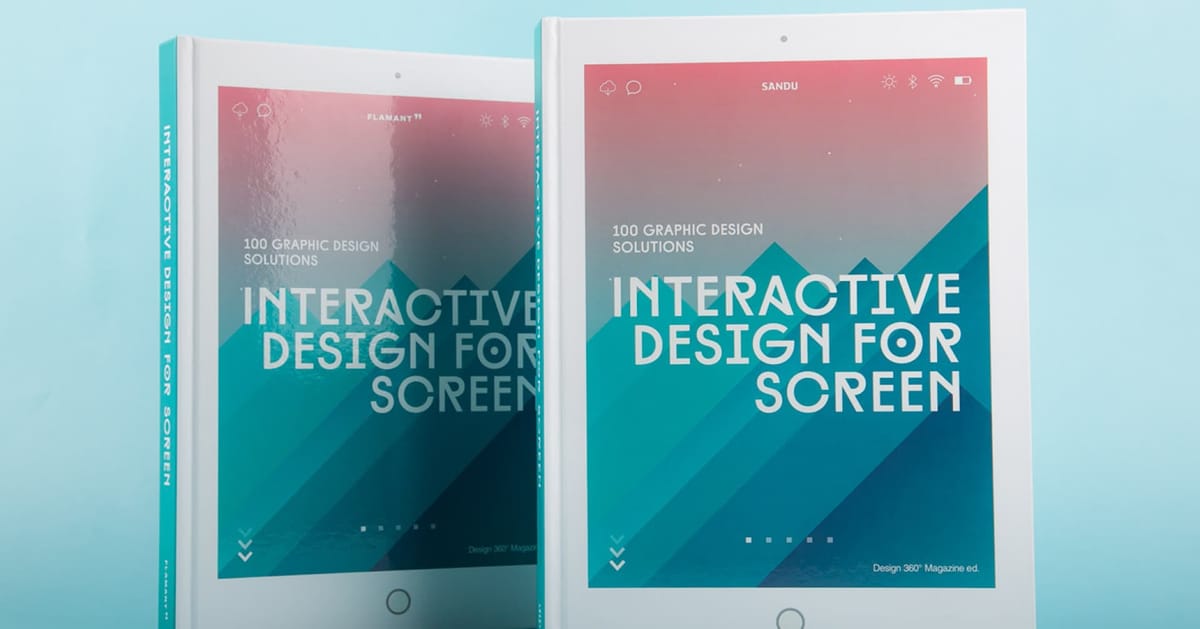
Strategic design solutions that solve real problems and deliver measurable results